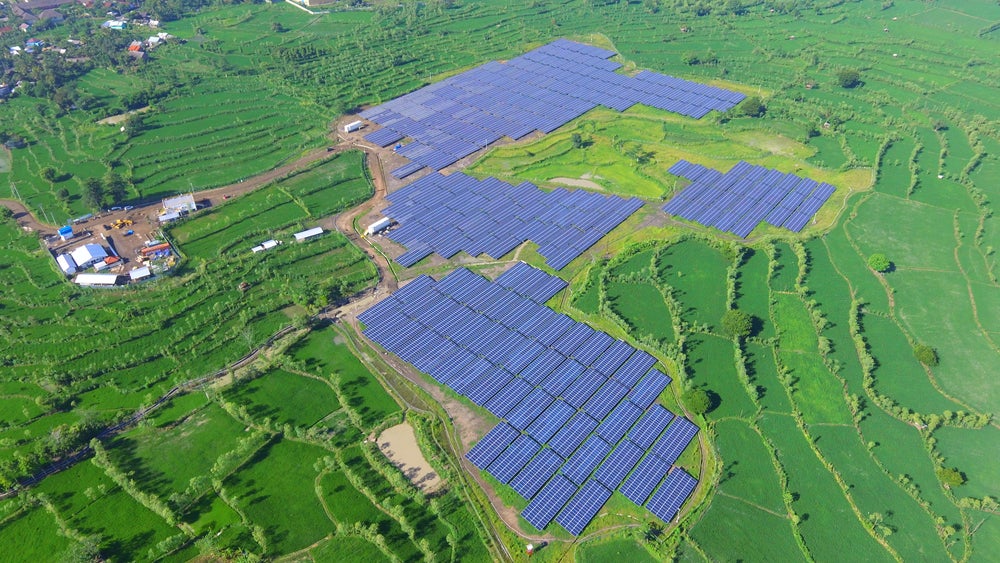
Indonesia officially launched its plan to mobilise a $20bn investment fund for decarbonisation on Tuesday as the country looks to accelerate its transition towards clean energy.
Financing for the fund, which was set up under Indonesia’s JETP, is led by the US and Japan, among other global leaders, as the country seeks to cut CO₂ emissions from its on-grid power sector by 250 million tonnes by 2030. It also has targets to increase the portion of renewable energy in its power mix to 44% by 2030, up considerably from the 12% seen last year.
A 327-page draft of the investment roadmap, known as the Comprehensive Investment and Policy Plan (CIPP), was initially released at the beginning of this month for public consultation.
The CIPP outlines the need for further investment worth $97.3bn if Indonesia is to meet these targets. This includes $66.9bn for 400 clean energy project proposals, which must be started by 2030 at the latest.
Of Indonesia’s electricity mix, 60% is still powered by coal, according to statistics from the International Energy Agency, and profits from the industry remain huge. In 2022 alone, the country earned $46.7bn from coal exports. The CIPP projects that emissions from on-grid coal generation will peak well before 2030 and that by the end of the decade, the country will see coal capacity reduced to 2020 levels as renewables and gas, a less polluting fossil fuel, are adopted at scale.
The CIPP also aims to significantly accelerate the deployment of wind and solar power compared with previous energy transition targets, but commitment to the clean energy sources remains insufficient, according to some environmental bodies.

US Tariffs are shifting - will you react or anticipate?
Don’t let policy changes catch you off guard. Stay proactive with real-time data and expert analysis.
By GlobalDataThe Centre for Research on Energy and Clean Air, a non-profit think tank, said in a statement reacting to the draft roadmap: “While the ambition to increase the share of renewable energy in power generation by 2030 is welcomed, there is an excessive focus on biomass and hydropower and overly conservative limits on solar power expansion.
“There is no reason why Indonesia cannot pursue more than 32 gigawatts (GW) of solar to be installed before 2030, based on experiences from China, among others,” it added.
In September, Indonesian state utility Perusahaan Listrik Negara (PLN) said that it would need up to $172bn of investment by 2040 if it is to meet targets for renewable energy capacity and make necessary upgrades to the country’s electricity grid. PLN was involved in the development of the CIPP, along with the Asia Development Bank, the government’s Indonesia Investment Authority and state-owned infrastructure company PT Sarana Multi Infrastruktur.
JETP breeds fear of “debt traps”
Environmentalists are also concerned about the financial side of the JETP. Currently, the fund relies heavily on commercial loans that could carry with them market rates, equity investment or other debt instruments.
Only $160m is set to be offered to Indonesia’s Government in the form of direct grants. Industry experts have echoed concerns over “debt traps” that could arise from the huge portion of investment coming from concessional or commercial loans.
“The largest share of financing comes from concessional loans, the second-largest from commercial loans and the smallest comes from grants, which is all in all a difficult package to swallow,” Tiza Mafira, director of the Climate Policy Initiative based in Indonesia, told Energy Monitor, sister site to Power Technology. “This doesn’t seem so much like a new form of financing but really business-as-usual financing for developing countries.”
However some experts maintained that, despite its perceived flaws, the JETP remains the most significant energy transition financial mechanism to have emerged globally.
Michael Kleine, the US Charge d’Affaires in Jakarta, argues that the fund will be used to “jump start” the process of scaling up renewables and will also attract further investment.
“We have to move quickly because 2030 is less than seven years away. The partnership must be enhanced and accelerated to do the priority projects, including to immediately realise the financing commitments,” Erick Thohir, Ad-Interim Chief Minister for Investment Affairs, told reporters at the CIPP launch.
Indonesia’s JETP is the largest climate investment of its kind in history, followed by Vietnam’s JETP of $15bn launched at the end of last year.


